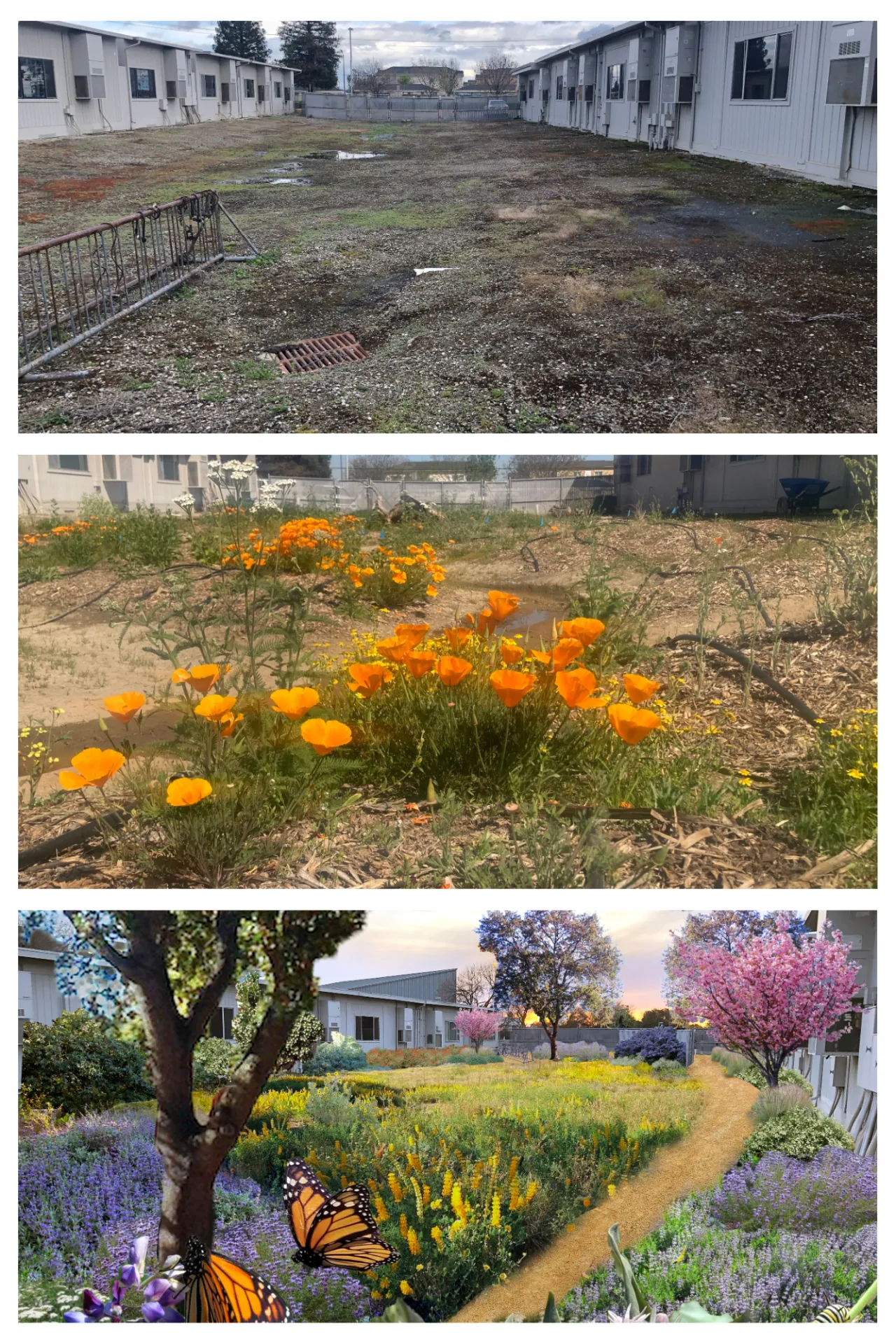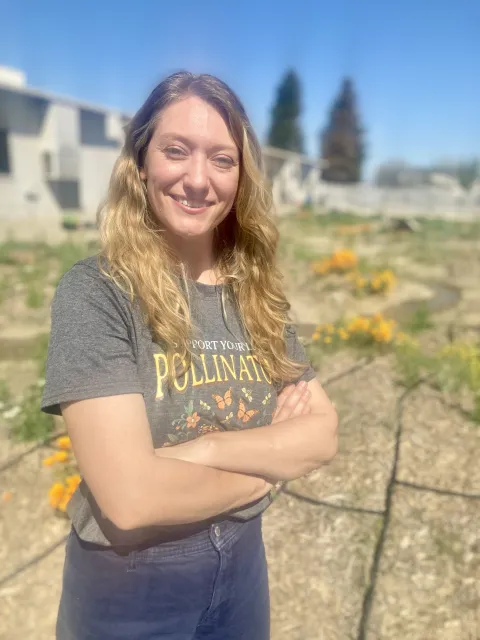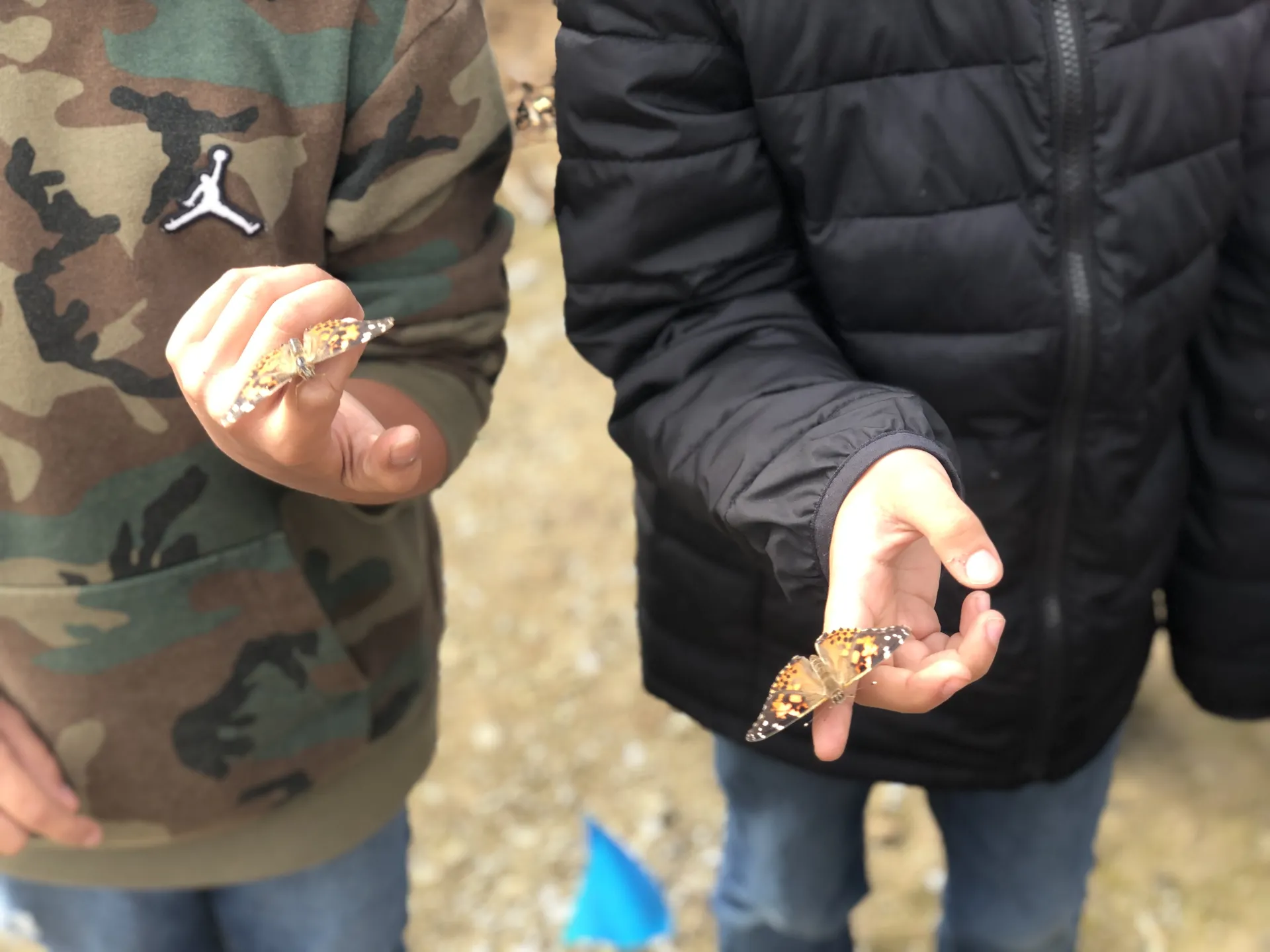
Before Katie Howden graduated from Madera South High School in 2008, she noticed an unsightly piece of vacant land between two portable classrooms on campus. The one-third acre gravel pit with a smattering of utility infrastructure was choked with puncturevine and tumbleweed or, during the rainy season, flooded with dirty storm water.
Howden studied art at Fresno State, and later was hired to be an art teacher at her alma mater.
“I looked at that bare spot on campus for 15 years,” she said. “I was tired of it being a big waste.”
A presentation by Madera County Master Gardener Cecelia Sheeter, who documented the return of native plant species following the Camp Fire in Huntington Lake, and a presentation by Doug Tallamy during the Bringing Back the Native Garden Tour series on YouTube, inspired a passion for native plants. With COVID-era free time, Howden scoured the Internet for information on native plants and their impact on natural ecosystems, pollinators and wildlife.
“Local insects and wildlife depend on native plants. We need caterpillars for food for birds; a single nest of chickadees needs 9,000 caterpillars. A keystone species like a Valley Oak supports 200 caterpillar species,” Howden said. “Common landscape plants like agapanthus, in contrast, are beautiful, but they support nothing.”
During her online research, Howden discovered the Xerces Society Habitat Kit Program, which offers a California Monarch and pollinators kit free to eligible programs. She applied, was approved and found herself committed to a January 2025 deadline for planting more than 700 native plants at Madera South.
Howden designed the new native meadow after Madera County’s natural vegetation distribution, with a riparian zone on rolling grassland in the west to oak woodland as the elevation rises toward the Sierra Nevada in the east. Madera County still sports a few of the unique habitat zones created by natural vernal pools, so Howden included an artificial vernal pool water feature in her design.

Preparing the area for planting the new vegetation required a community effort. FFA and public safety students hand dug the vernal pool pit and river-like trenches with their own shovels. Other students joined work days to move gravel, dirt and mulch. Valley Children’s Hospital donated truckloads of topsoil for the rolling hills. A local arborist provided wood chips for mulch. Two miles of drip irrigation line was donated by AgriWorld Cooperative in Madera. The San Joaquin River Parkway and Conservation Trust donated wildflower seed. Howden’s dad, a retired Madera High science teacher, devoted countless hours to digging trenches, moving earth and setting out and connecting irrigation lines, among many other tasks.
Work continued to the last day of finals in December 2024, and the natives were planted in time to meet the Jan. 1 deadline. The plants included milk weed – a critical food source for the Monarch butterfly caterpillars – bees bliss sage, yarrow, gumplant and wooley sunflower. Mule fat, sycamores and black sage are growing in the riparian area. Toyon, elderberry and coffee berry are taller native shrubs for the oak woodland. Valley oaks will be planted in the part of the project where they will eventually shade an outdoor classroom furnished with surplus tables donated by the school.
All the planning, solicitation and coordination were rendered by Howden to provide students with a peaceful, beautiful and educational retreat on campus.
“The goal was to bring a slice of nature right to the students, to expand their world,” Howden said. “How can they care about nature if they don’t know it?”
The native meadow is already a home for valuable educational experiences. Howden sent her art class outside for a plein air drawing assignment. “The students didn’t have a sense of what makes plants different from one another. With this assignment, they were poking around, really looking at the leaves and flowers,” she said.
Third grade students from the adjoining elementary school walked over and released butterflies they raised in the classroom. High school science teachers are thinking about teaching opportunities for their students in the natural habitat. Students in the Newcomers Program, whose classroom windows face out to the now beautiful natural area, are learning about the nature of their new surroundings.
Already, the meadow has drawn native wildlife to the campus. “We have a resident fox, burrowing owl have visited and we’re starting to get birds – red-tailed hawks, egrets,” Howden said. “Wildlife is beyond resilient.”
Follow the continuing growth and development of the Madera South High School pollinator meadow project on Instagram @MSHS_pollinatormeadowproject.


__________________________
Written by UC Master Gardener Jeannette Warnert


